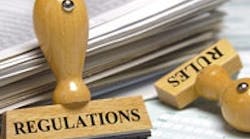"What's the temperature range on your cooling water?" I asked. A shrug was his reply. "What's the water quality for your boilers?" was my second question. This prompted another shrug. I got the answers I needed from his vendors but was embarrassed for him, even if he wasn't.
[pullquote]
My young client needed a basic engineering data document (BEDD). It should have been in the first document he handed me. A BEDD should be developed during the initial design of a plant and updated periodically during commissioning, construction and operation of the plant. In short, a BEDD establishes the ground rules.
Don't confuse a BEDD with basic engineering data (BED), which is specific to a particular project, although it should excerpt parts of the BEDD.
As a minimum, a BEDD should include the following: 1) a site map; 2) an electrical area classification map of the facility; 3) utilities condition — e.g., temperature, pressure and composition, if applicable, of nitrogen, oxygen, air, instrument air, breathing air, process water, potable water, steam, condensate, eyewash water, fuel gases, etc.; 4) ambient conditions — e.g., maximum and minimum temperature, design conditions, including the effects of solar heating; 5) base elevation above sea level and barometric pressure; 6) pipe standards — e.g., ANSI ratings, surface finishes, corrosion classifications, paint guidelines as well as construction, testing and inspection requirements; 7) line list standards — e.g., how operating and design pressure is to be established; 8) grounding requirements for equipment and instruments; 9) drawing templates — e.g., process and instrumentation drawings (P&IDs), plans, elevations, electrical and civil diagrams; 10) basic vendor package form requirements — e.g., cover letter, design basis, data sheet and summary drawing; 11) product quality control criteria — e.g., parts per million (it's generally better to express ppm in terms of mass not volume); 12) programming standards — e.g., faceplate ones for a pump operation; 13) design conditions for sewer, flares and stacks; 14) management of change procedures and applicability — use flow diagrams; 15) ground excavation standards — e.g., depth required for trenches where trucks will pass and footing specifications; 16) the frost line, or freezing depth, and acceptable means of counteracting freezing; and 17) contacts for permits, inside the company, and in government bodies — e.g., in municipal and state environmental and safety agencies as well as federal ones.
This may seem like a lot — it is. The best way to simplify developing a BEDD is to use a checklist provided by a general contractor. For example, consider 25-psig steam produced by a 400-psig boiler. The first box would list the saturation pressure: 25 psig. The second box would detail the assumed nominal (design) temperature, which usually is the saturation temperature, in this case, 267°F. The maximum temperature assumes the steam is reduced from the boiler pressure and operated at the site high pressure — use the saturation temperature of 400-psig saturated steam as the maximum temperature, i.e., 448°F. The minimum temperature would be the condensate tank temperature, which should be part of the BEDD. Suppose we choose 40 psig as the pressure, then the minimum temperature would be 267°F for the collected steam. If the 25-psig steam isn't collected, then the minimum temperature would be the freezing point of water, 32°F.
Once the BEDD checklist is prepared, it must be updated as necessary. As with all important documents, explain amendments and ensure the general contractor and the company that will live with the BEDD long after the contractor has left both agree on them. A chronological history memo should document all significant changes.
In contrast, a BED is specific to a particular project and is less extensive. A typical BED should contain: 1) the process flow diagram; 2) a P&ID; 3) a preliminary line list; 4) an equipment list; 5) design procedures — e.g., software accepted for design; 6) purchasing, shipping, commissioning and turnover standards — e.g., types of flow measurements that are acceptable, equipment quality assurance, process loop checks, etc.; 7) reference to excerpts of the BEDD, such as barometric pressure; 8) citations to documentation procedures — e.g., drawing standards, instrument and equipment data sheets, documentation security requirements and approval procedures, etc. Some people contend a BED also should contain the design basis and other project details but I don't agree.
Don't consider the BEDD and BEDs as fixed documents. However, to avoid confusion, freeze them at times. Over the life of a facility, they are truly living things that require frequent re-assessment; change files and exception files must be maintained if they are to be useful.

DIRK WILLARD is a Chemical Processing contributing editor. He recently won recognition for his Field Notes column from the ASBPE. Chemical Processing is proud to have him on board. You can e-mail him at [email protected]
Latest from Design & Simulation
Latest from Design & Simulation



